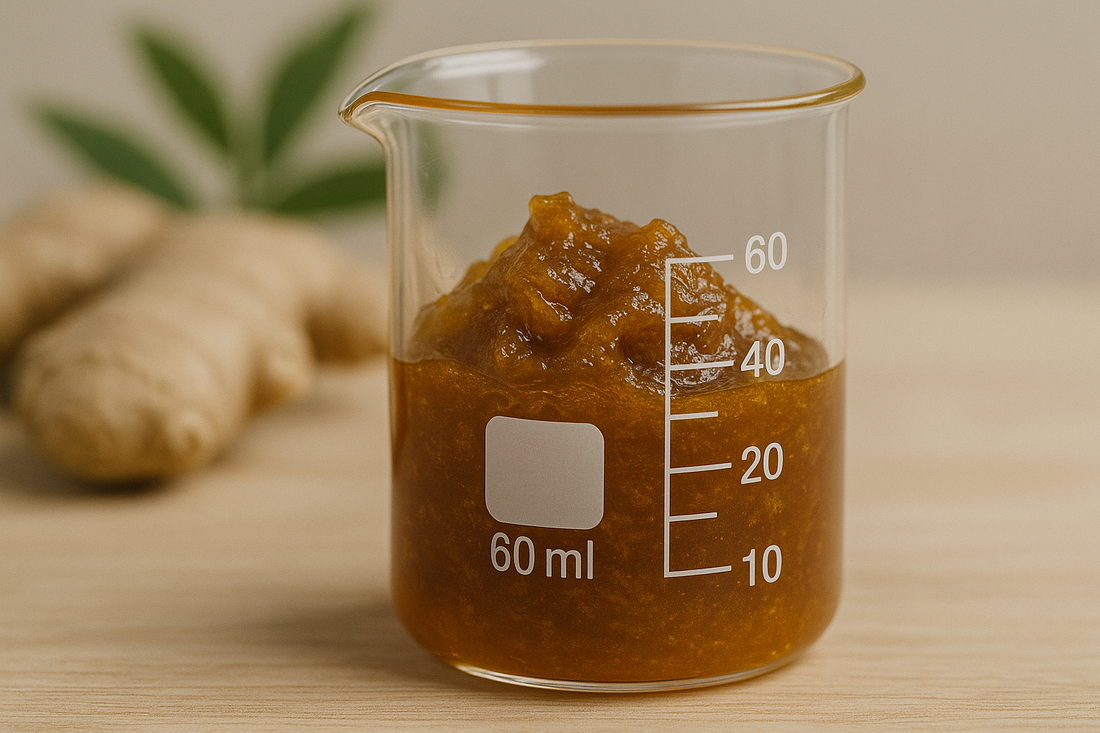
CO₂ Extracts vs. Essential Oils – What’s the Difference, and Why Does It Matter?
Share
Plant-based skincare and aromatherapy products often rely on essential oils—but they’re not the only way to capture a plant’s aroma and therapeutic compounds. CO₂ extracts, sometimes called supercritical extracts, are a newer and more precise way of extracting the active components from botanicals. Though both essential oils and CO₂s come from plants, the way they’re made—and what they contain—can be quite different.
How Essential Oils Are Made
Essential oils are typically made by steam distillation, where steam passes through plant material and carries off volatile compounds (the ones that easily evaporate). These aromatic vapours are then cooled and collected as a concentrated oil. This method has been used for centuries and works well for flowers, leaves, roots, and resins.
But steam distillation has its limits. It captures mostly volatile (easily evaporated) components—things like monoterpenes, esters, and alcohols. It leaves behind heavier, non-volatile compounds like waxes, pigments, resins, and some antioxidant-rich lipids. It also uses heat and water, which can alter or degrade delicate compounds in the process.
What Makes CO₂ Extracts Different?
CO₂ extraction uses carbon dioxide under high pressure—not heat or steam—to pull compounds from plant material. When CO₂ is placed under specific conditions, it becomes “supercritical,” meaning it behaves like both a gas and a liquid. In this state, it can pass through plant matter and dissolve both volatile and non-volatile compounds, offering a fuller, more complete extraction.
This process happens at low temperatures and without oxygen or water, which helps preserve sensitive compounds and gives CO₂ extracts a closer match to the plant’s original chemical profile.
The result is often a richer, more robust extract—one that may include natural waxes, fatty acids, resins, and pigments that you won’t find in a traditional essential oil.
Why Choose a CO₂ Extract?
CO₂s are ideal when you want to work with the full spectrum of a plant’s therapeutic potential. In skincare, they can offer enhanced anti-inflammatory, antimicrobial, or antioxidant effects due to the inclusion of heavier compounds that distillation misses. For example:
Calendula CO₂ includes far more triterpenes than calendula essential oil, making it more effective for soothing damaged or inflamed skin
Ginger CO₂ retains pungent compounds like gingerols and shogaols that aren’t present in the essential oil, giving it more robust warming and anti-inflammatory properties
Chamomile CO₂ has a fuller spectrum of sesquiterpenes and azulenes, making it gentler for sensitive skin
CO₂s are also often less oxidised, making them more stable on the shelf and less likely to irritate the skin. And because they’re solvent-free and don’t require alcohol or heat, they’re a great option for customers seeking the cleanest, most intact version of the plant.
When to Use One Over the Other
Essential oils remain an excellent option for aromatherapy, perfumery, and energetic blending. They’re lighter, more volatile, and ideal for diffusing or layering in scent profiles.
CO₂ extracts are typically chosen for skincare, therapeutic balms, salves, or massage oils—any situation where you want more of the plant’s functional components, not just its aroma.
At Zurma, we stock both CO₂ extracts and essential oils, and in some cases we offer both from the same plant so you can choose the one that fits your needs. Whether you’re formulating a product or selecting something for personal care, knowing the difference allows you to choose what’s best for your body and your goals.
